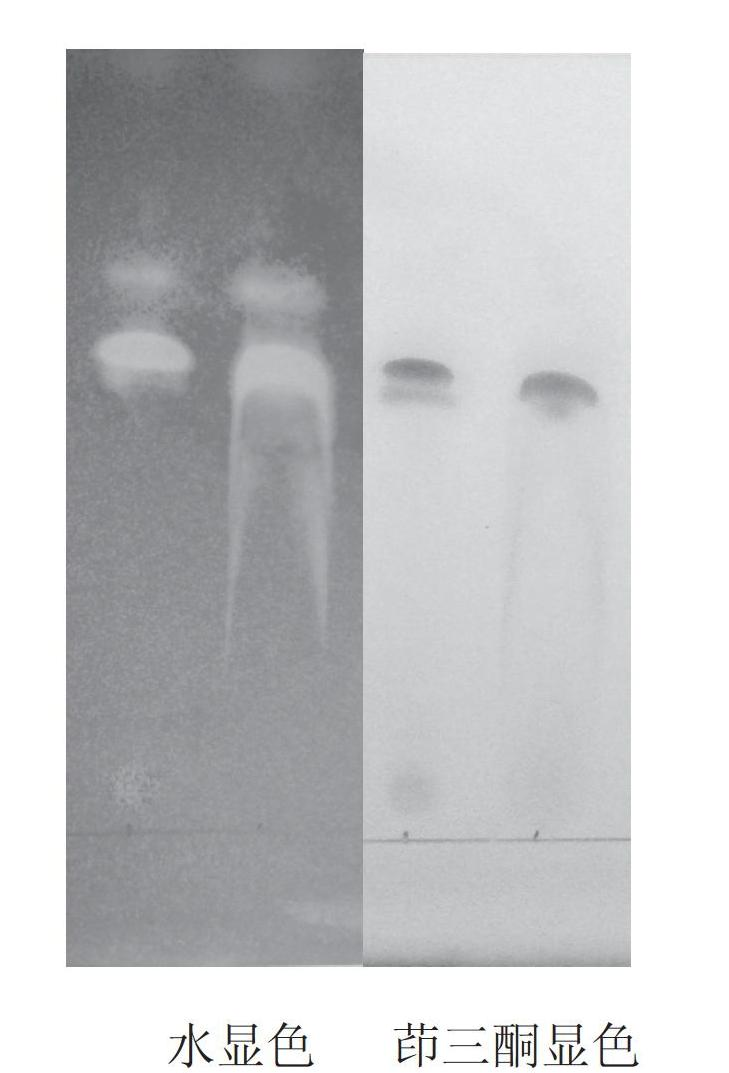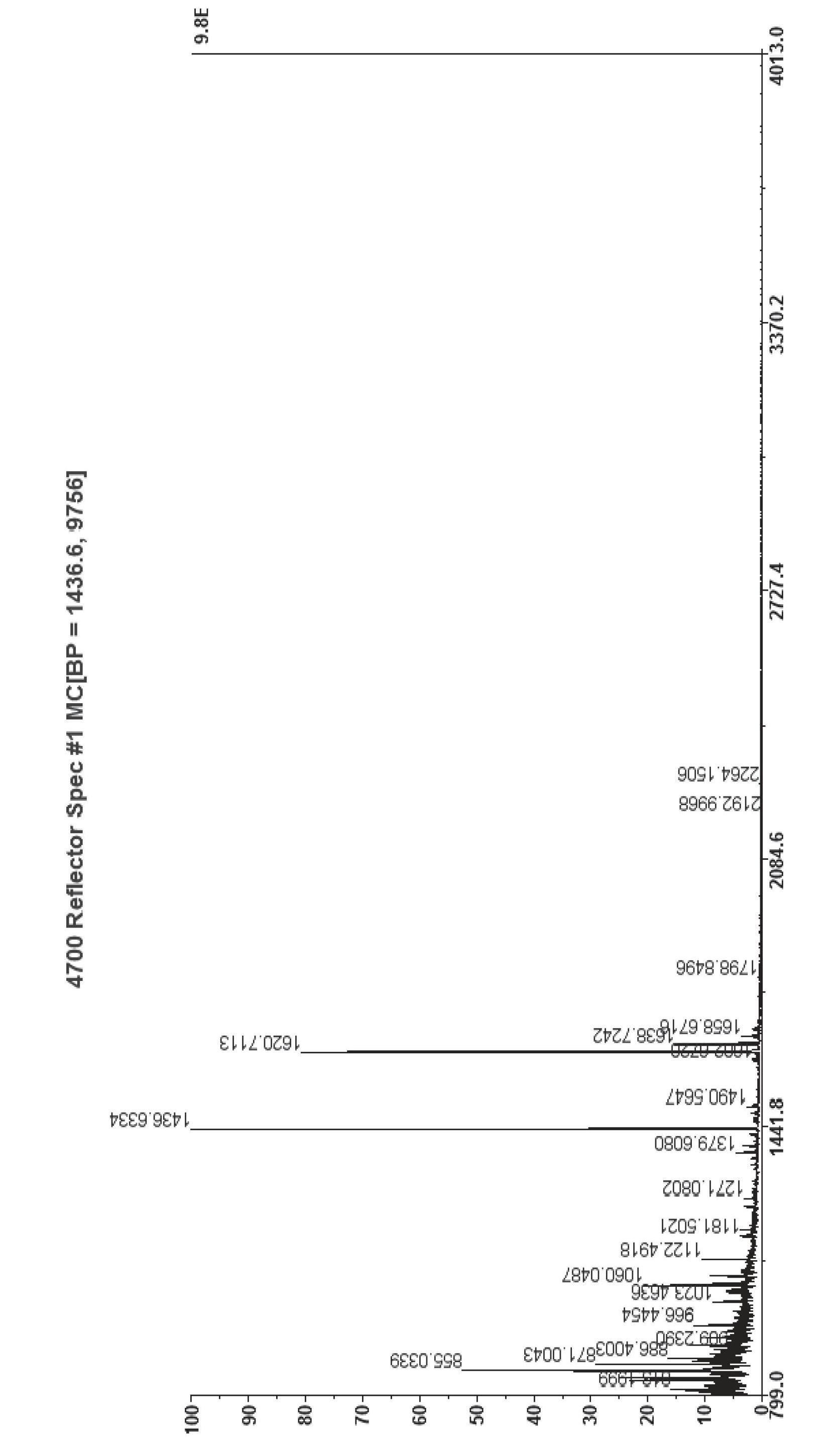Lipopeptid and derivative thereof, and preparation methods and application of lipopeptid and derivative of lipopeptid
A technology of derivatives and lipopeptides, applied in the field of lipopeptides and their derivatives that improve the antibacterial ability of the host, and its preparation, can solve problems such as the therapeutic effect of antibiotics on infection
- Summary
- Abstract
- Description
- Claims
- Application Information
AI Technical Summary
Problems solved by technology
Method used
Image
Examples
Embodiment 1
[0100] Example 1: Separation and purification of lipopeptides.
[0101] See Smyth, Thomas et al. Isolation and Analysis of Lipopeptides and High Molecular Weight Biosurfactants, 2010. The strain used was Staphylococcus epidermidis 1457.
[0102] (1) Staphylococcus epidermidis fermentation
[0103] ①Take out the preserved Staphylococcus epidermidis 1457 at -80°C, streak on tryptic soy broth (TSB) solid medium, and keep at 37°C for 16 hours until a single colony grows.
[0104] ②Pick a single colony and inoculate it in 20ml TSB liquid medium for culture at 37°C, 220rpm, for 16h.
[0105] ③Transfer the Staphylococcus epidermidis bacteria liquid cultured overnight to 200ml TSB liquid medium at 1%, and ferment at 37°C, 220rpm, for 16h.
[0106] (2) Acid precipitation in fermentation broth
[0107] ① Centrifuge the Staphylococcus epidermidis fermentation broth. 10000rpm, 4°C, 20min.
[0108] ② Adjust the supernatant of the Staphylococcus epidermidis fermentation broth after ce...
Embodiment 2
[0119] Example 2: Identification of lipopeptides.
[0120] Take 10 μl of the lipopeptide separated in Example 1 and spot it on a thin-layer chromatography plate, and the spotting position is 1 cm away from the lower edge. Place the chromatography plate in a chromatography cylinder presaturated with developing medium. The spreading agent is n-butanol: acetic acid: water = 4:2:1. Chromatography was stopped after the developing agent ran to 1cm from the edge of the chromatographic plate. Let dry in a fume hood. The board was then placed in water for 5 min, and then dried naturally in a fume hood. Observe the position of the lipopeptide on the plate. After completely drying, spray 0.25% ninhydrin on the plate, place it in an oven at 60°C, and observe the lipopeptide on the plate after 10 minutes. Experimental results such as figure 1 As shown, the lipopeptide forms an oil-expelling ring in the water phase, and after thin-layer chromatography, it is developed with water to pr...
Embodiment 3
[0121] Embodiment 3: lipopeptide HPLC analysis and molecular weight identification, the identification of polypeptide sequence
[0122] The lipopeptide separated in Example 1 was loaded onto a high-pressure liquid chromatography analyzer (provided by Shanghai Zhongke New Life Co., Ltd.). The mobile phase was gradient eluted with 0.1% TFA in water and 0.1% TFA in acetonitrile for 80 minutes, and then the eluted peaks were analyzed for molecular weight by peptide mass spectrometry. Analysis by HPLC, such as figure 2 As shown, three main peaks are obtained, and the peak time is 10min, 69min, and 70min respectively. After peptide mass spectrometry analysis, such as image 3 As shown, the peak time of 10min shows that there are two kinds of substances, and their molecular weights are 1437 and 1621 respectively. Such as Figure 4 As shown, the peak with a peak time of 69 min shows that there is a substance with a molecular weight of 2491. Such as Figure 5 As shown, the molec...
PUM
 Login to View More
Login to View More Abstract
Description
Claims
Application Information
 Login to View More
Login to View More - Generate Ideas
- Intellectual Property
- Life Sciences
- Materials
- Tech Scout
- Unparalleled Data Quality
- Higher Quality Content
- 60% Fewer Hallucinations
Browse by: Latest US Patents, China's latest patents, Technical Efficacy Thesaurus, Application Domain, Technology Topic, Popular Technical Reports.
© 2025 PatSnap. All rights reserved.Legal|Privacy policy|Modern Slavery Act Transparency Statement|Sitemap|About US| Contact US: help@patsnap.com



